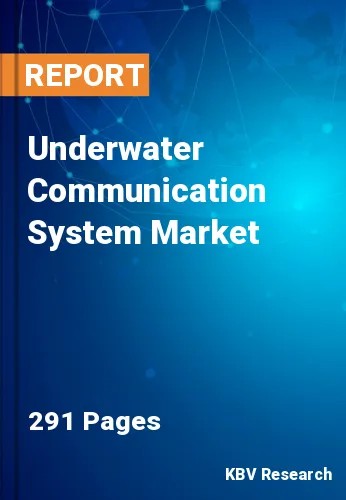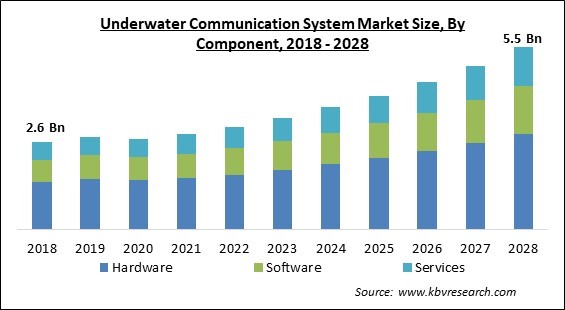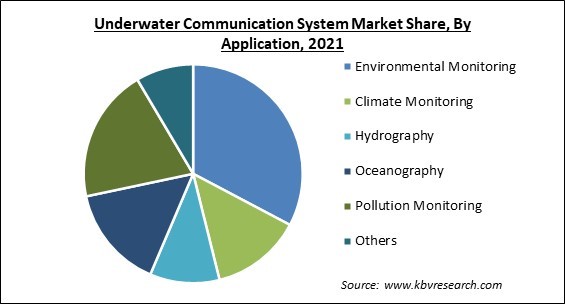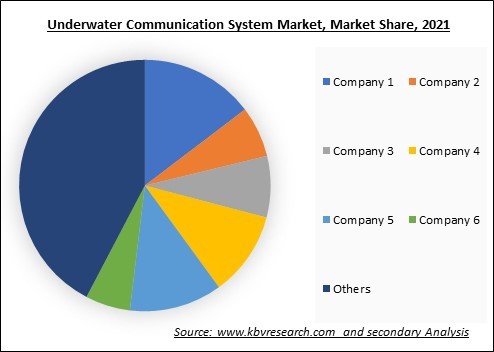
The Global Underwater Communication System Market size is expected to reach $5.5 billion by 2028, rising at a market growth of 10.1% CAGR during the forecast period.
A device that aids in submerged message transmission and reception is known as an underwater communication system. Underwater communication differs from terrestrial communication in that it uses acoustic waves instead of electromagnetic signals. Increased undersea research activities, particularly for environmental protection are driving the underwater communication system market.

Acoustic, radio-frequency, as well as optical wireless communications, are only a few examples of the types of general communication systems that are used or considered when communicating underwater. An underwater communication system encompasses a number of advantages, including statistical modeling and estimation, underwater channel characterization, and underwater wireless communications. Underwater communication requires dependable communication technologies.
Manufacturers are investing more in maritime research to spur the market for underwater communication systems. The development of improved and more efficient underwater communication systems is also increasing quickly in offshore locations. These elements are presenting a number of lucrative market prospects for underwater communication system manufacturers.
In the underwater communication system market, several communication technologies have been created. These advancements concern cutting-edge features and functions. These cutting-edge innovations ensure effective communication in the aquatic environment and increase demand for underwater communication systems.
The COVID-19 pandemic significantly impacted various economies all over the world. In addition, several businesses were also damaged by the pandemic. The underwater communication system market was also hampered due to the pandemic. The underwater communication systems supply chain has been majorly disrupted by the emergence of the COVID-19 pandemic as well as the limitations and lockdowns brought by the outbreak in many countries. Sales, profitability, and order intake suffered significantly as a result of decreased customers’ and suppliers’ activity, travel limitations, a greater chance of project delays brought on by a temporary shutdown, as well as a shortage of inputs.
Data can be wirelessly sent to the sea or other marine environments using underwater acoustic modems. The navy can observe, navigate, and communicate underwater owing to underwater modems. The development of underwater modems, also known as acoustic modems, has made it possible to employ technologies, like GPS and Wi-Fi below the water's surface. To solve the challenges involved in the underwater propagation of information-bearing signals, scientists and researchers are conducting substantial studies. Underwater communication systems must be reliable and have a large capacity for underwater communication. The use of underwater acoustic communication systems in naval defense has grown as a result of all these causes. These factors are stimulating the growth of the underwater communication system market.
In the era of modernization, technological advancements throughout a number of industries are accelerated. Owing to this, there are various technological advancements that have been made across underwater communication systems, which are increasing their reliability as well as speed and accuracy. By gaining access to a large amount of underwater data and incorporating new methods, advances in underwater audio communication technology are being made.
Underwater communication systems are significantly beneficial within a number of applications. However, the slower speed of data transmission of this technology is a major impeding barrier to the adoption of underwater communication system technology. Acoustic waves are employed as the principal carrier for underwater wireless communication systems due to their relatively low absorption in underwater conditions. When compared to radio communication, which can only penetrate 100 meters of water, underwater acoustic communication is relatively slow.
Based on Component, the Underwater Communications System Market is segregated into Hardware, Software, and Services. In 2021, the services segment garnered a significant revenue share of the underwater communication system market. System engineering, technical support, and maintenance are a few of the nautical solutions and services offered by UCS. Various companies all over the world sell, manufacture, and provides maintenance for underwater tools and equipment.

By Application, the Underwater Communications System Market is segmented into Climate Monitoring, Environmental Monitoring, Hydrography, Oceanography, Pollution Monitoring, and Others. In 2021, the environmental monitoring segment registered the highest revenue share of the underwater communication system market. The rising growth of the segment is primarily attributed to the fact that underwater communication systems assist the government in keeping track of the environment. It is possible to track how businesses in the oil and gas industry function in terms of their environmental impact.
Based on End-User, the Underwater Communications System Market is classified into Marine, Military & Defense, Oil & Gas, Scientific Research & Development, and Others. In 2021, the military and defense segment registered a significant revenue share of the underwater communication system market. The military makes use of it for both underwater surveillance and invasion detection. Deploying a communication system within the body of water would alert the country to the hazard because adversarial states may plan sabotage via the water.
On the basis of Connectivity, the Underwater Communications System Market is bifurcated into Hardwired and Wireless. In 2021, the wireless segment procured the highest revenue share of the underwater communication system market. Data is transported through water in wireless transmission. Underwater wireless communications are essential for scientific data collection, underwater exploration, and environmental monitoring. Underwater wireless communications still pose certain challenges because of the distinct and challenging conditions that define these channels.
| Report Attribute | Details |
|---|---|
| Market size value in 2021 | USD 2.9 Billion |
| Market size forecast in 2028 | USD 5.5 Billion |
| Base Year | 2021 |
| Historical Period | 2018 to 2020 |
| Forecast Period | 2022 to 2028 |
| Revenue Growth Rate | CAGR of 10.1% from 2022 to 2028 |
| Number of Pages | 291 |
| Number of Tables | 480 |
| Report coverage | Market Trends, Revenue Estimation and Forecast, Segmentation Analysis, Regional and Country Breakdown, Companies Strategic Developments, Market Share Analysis, Company Profiling |
| Segments covered | Component, Application, End-user, Connectivity, Region |
| Country scope | US, Canada, Mexico, Germany, UK, France, Russia, Spain, Italy, China, Japan, India, South Korea, Singapore, Malaysia, Brazil, Argentina, UAE, Saudi Arabia, South Africa, Nigeria |
| Growth Drivers |
|
| Restraints |
|
Region-Wise, the Underwater Communications System Market is analyzed across North America, Europe, Asia-Pacific, and LAMEA. In 2021, North America accounted for the biggest revenue share of the underwater communication system market. Unmanned underwater vehicles are being used by the US for a variety of defense missions, including security, anti-submarine warfare, and surveillance, in response to growing security concerns in regional countries. As a result, the growing utility of UUVs in the commercial and defense sectors is likely to propel market expansion in North America.
Free Valuable Insights: Global Underwater Communication System Market to reach USD 5.5 Billion by 2028

The leading players in the market are competing with diverse innovative offerings to remain competitive in the market. The below illustration shows the percentage of revenue shared by some of the leading companies in the market. The leading players of the market are adopting various strategies in order to cater demand coming from the different industries. The key developmental strategies in the market are Acquisitions, and Partnerships & Collaborations.
The market research report covers the analysis of key stake holders of the market. Key companies profiled in the report include Thales Group S.A., Kongsberg Group, Saab AB, L3Harris Technologies, Inc., Teledyne Technologies, Inc., Ultra-Electronics Holdings plc, Sonardyne International Ltd., DSPComm, Undersea Systems International, Inc. and Sea and Land Technologies Pte Ltd.
By Component
By Application
By End User
By Connectivity
By Geography
The global Underwater Communication System Market size is expected to reach $5.5 billion by 2028.
The Growing Integration of Underwater Communication Systems Within Naval Defense Application are driving the market in coming years, however, Limited Data Transmission Speed and Delayed Delivery Rates restraints the growth of the market.
Thales Group S.A., Kongsberg Group, Saab AB, L3Harris Technologies, Inc., Teledyne Technologies, Inc., Ultra-Electronics Holdings plc, Sonardyne International Ltd., DSPComm, Undersea Systems International, Inc. and Sea and Land Technologies Pte Ltd.
The expected CAGR of the Underwater Communication System Market is 10.1% from 2022 to 2028.
The Hardware market is leading the Global Underwater Communication System Market by Component in 2021; thereby, achieving a market value of $2.9 billion by 2028.
The North America market dominated the Global Underwater Communication System Market by Region in 2021; thereby, achieving a market value of $1.9 billion by 2028.
Our team of dedicated experts can provide you with attractive expansion opportunities for your business.
